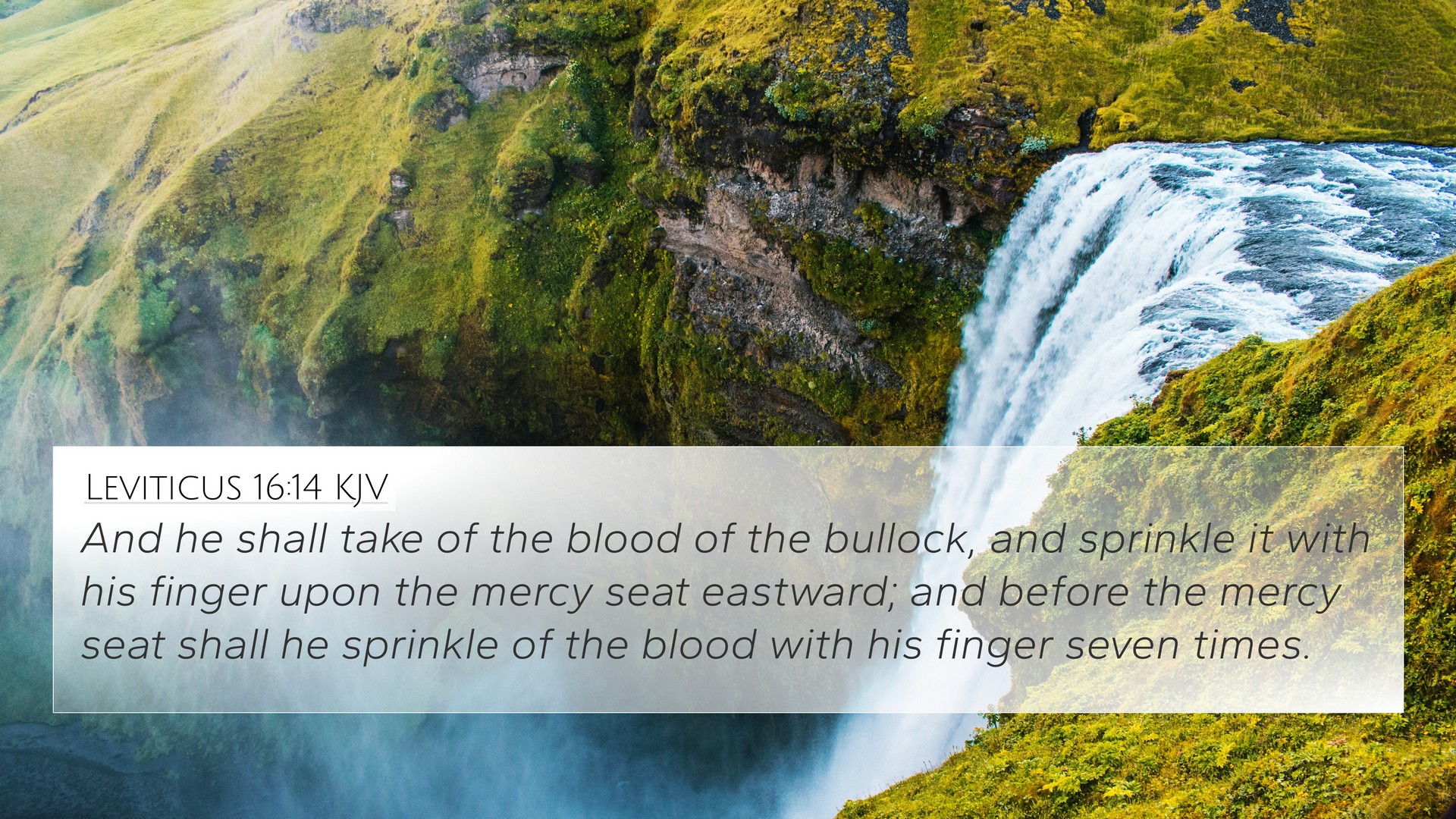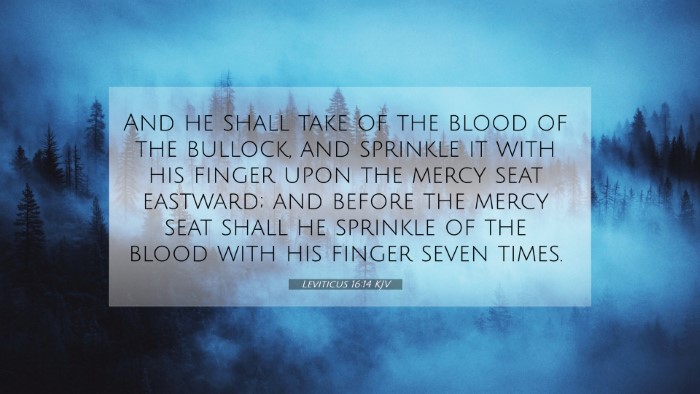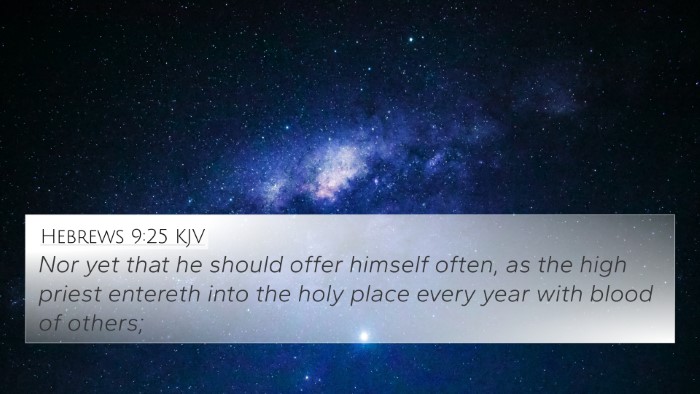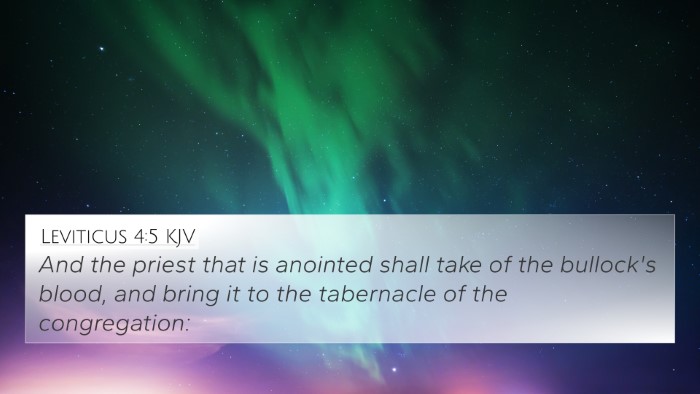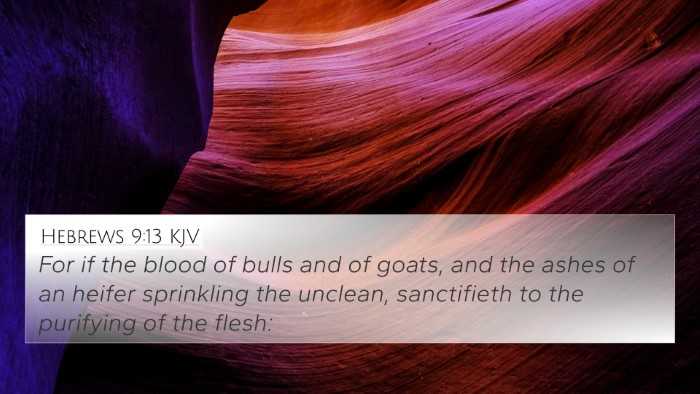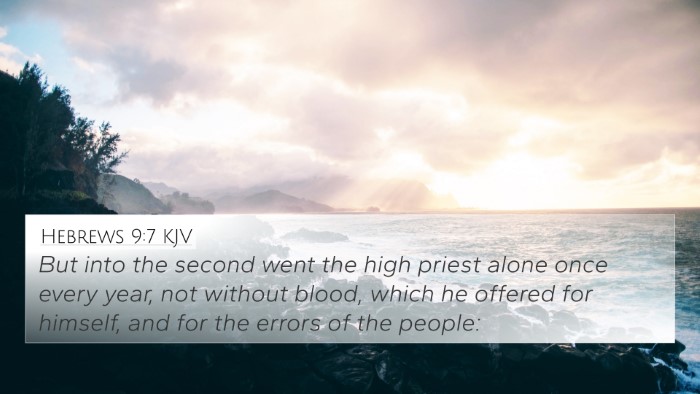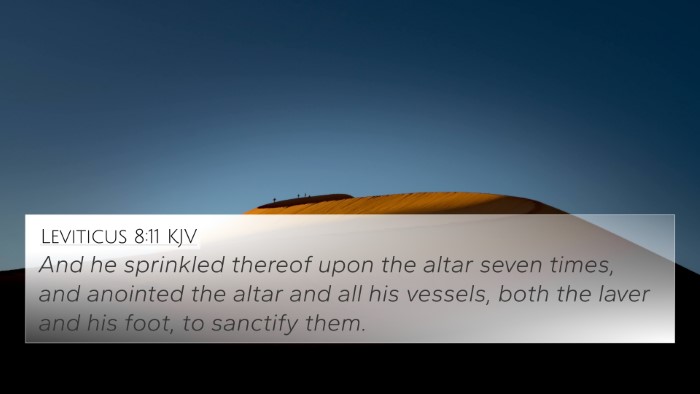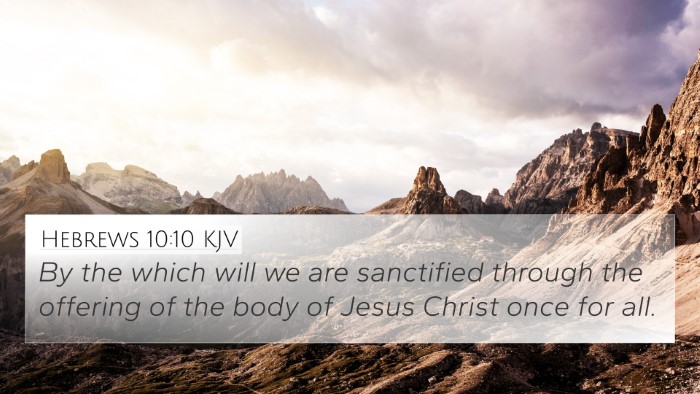Understanding Leviticus 16:14
Leviticus 16:14 states: "And he shall take of the blood of the bullock, and sprinkle it with his finger upon the mercy seat eastward; and before the mercy seat shall he sprinkle of the blood with his finger seven times." This verse is crucial in the Old Testament sacrificial system, portraying profound themes of atonement, sacrifice, and divine mercy.
Contextual Overview
The setting of Leviticus 16 centers around the Day of Atonement (Yom Kippur), where the high priest performs rituals to atone for the sins of the people of Israel. The act of sprinkling blood signifies the means through which the people can be reconciled with God.
Commentary Insights
This section combines insights from various public domain commentaries to provide a rich understanding of Leviticus 16:14.
Matthew Henry's Commentary
- Henry emphasizes the significance of blood in the atonement process, which is a recurring theme throughout Scripture. He notes that the blood represents life and serves as a medium for reconciliation.
- He also highlights that the act of sprinkling must be done carefully and according to God's command to signify His holiness and the seriousness of sin.
Albert Barnes' Notes
- Barnes elaborates on the symbolism of the mercy seat and its representation of God's presence among His people. The blood sprinkled symbolizes cleansing and forgiveness.
- He relates this ritual to the New Testament understanding of Christ's sacrifice, where Jesus is portrayed as the ultimate high priest who offers His blood for eternal redemption.
Adam Clarke's Commentary
- Clarke discusses the significance of the number seven in the sprinkling process, symbolizing completeness and perfection in the act of atonement.
- He also points out the geographical orientation of the sprinkling ("eastward"), suggesting a possible connection to the movement towards God and away from sin.
Thematic Connections
Understanding Leviticus 16:14 also requires us to explore its thematic connections in the broader biblical narrative. Here are some thematic connections and related verses:
- Hebrews 9:12-14: Discusses Christ entering the Most Holy Place with His own blood, drawing a parallel with the Levitical priesthood.
- Exodus 12:7: The blood of the Passover lamb provides a foundation for the understanding of sacrificial blood as a means of protection and salvation.
- Romans 3:25: Portrays Jesus as a propitiation through faith in His blood, connecting the Old Testament rituals to New Testament theology.
- 1 Peter 1:18-19: Relates to the idea of redemption through the blood of Christ, further highlighting the continuity of atonement through Scripture.
- Isaiah 53:5: Foretells the suffering servant, emphasizing that by His wounds we are healed, linking to the sacrificial aspect of Leviticus.
- Hebrews 10:4-10: Clarifies the insufficiency of animal sacrifices and points toward the perfect sacrifice of Christ.
- John 1:29: John the Baptist refers to Jesus as the Lamb of God, connecting the Passover imagery with Christ's atoning work.
- Leviticus 17:11: Reinforces the principle that the life of the flesh is in the blood, stressing the blood's importance for atonement.
- Colossians 1:20: Speaks of reconciliation through the blood of Christ, echoing the themes found in Leviticus.
- Ephesians 1:7: Discusses redemption through His blood, highlighting the New Covenant's fulfillment of Old Testament sacrifices.
Bible Cross-References
For those exploring Bible verse cross-references and connections between Bible verses, you might consider utilizing a bible concordance or a bible cross-reference guide to see how these verses interlink.
Tools for Bible Cross-Referencing
- Bible Concordance: A tool that lists words and the verses where they appear, helping to identify connections.
- Bible Cross-Reference Guide: Provides insights into related scriptures across both testaments.
- Bible Cross-Reference System: Allows for thematic studies by grouping verses by topic.
- Cross-Reference Bible Study Methods: Techniques to deeply analyze connections between verses and themes.
Understanding Leviticus 16:14 involves recognizing its profound theological implications and its ongoing relevance in the narrative of Scripture. By exploring cross-references and using resources for biblical exegesis, one can gain deeper insights into the interconnectedness of biblical texts, thereby enriching their study and application.
